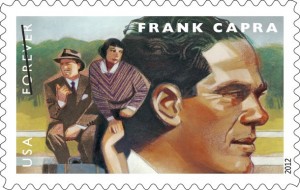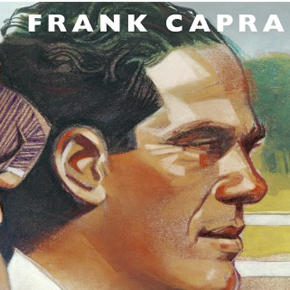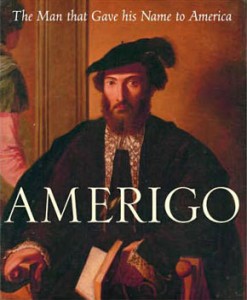Daily Archives: September 8, 2012
Director Frank Capra Honored with U.S. Postal Stamp
Sicilian-born filmmaker’s movies focused on patriotism and hope
A stamp to honor film director Frank Capra, best known for the perennial favorite It’s a Wonderful Life starring James Stewart, has been issued by the Postal Service. Capra is one of four famous filmmakers to be awarded their own stamps. The others are John Ford, John Huston and Billy Wilder. The stamps will feature images from their most famous movies.
“With these stamps, we’re bringing these filmmakers out from behind their cameras and putting them in the spotlight so that we can learn more about them,” said Samuel Pulcrano, U.S. Postal Service vice president of corporate communications.
Capra’s movies, which along with It’s a Wonderful Life (1946) also include It Happened One Night
(1934), You Can’t Take it With You
(1938), and Mr. Smith Goes to Washington (1939), reflect an America ready for social change but still strongly attached to traditional family and class values.
One common theme running through his films is the presence of patriotism and hope, which Capra sees as an antidote to a hard life. “I see a small farm boy becoming a great soldier; I see thousands of marching men…And I can see the beginnings of a new nation like Abraham Lincoln said. And I can see that Ohio boy being inaugurated as president. Things like that can only happen in a country like America,” says the hero of Mr. Deeds Goes to Town (1936).
Born Francesco Rosario Capra in 1897 in Bisacquino, near Palermo, Sicily, he was six years old when he emigrated with his family to the United States. He once recounted the ship’s arrival into New York, where he saw “a statue of a great lady, taller than a church steeple, holding a torch above the land we were about to enter.”
His father said to him, according to a 1992 biography of Capra, “Ciccio, look! Look at that. That’s the greatest light since the star of Bethlehem! That’s the light of freedom. Remember that. Freedom.”
Capra’s family moved to an Italian section of Los Angeles, where the young Capra sold newspapers to help support his family. He worked odd jobs and played the banjo to pay his way through college, eventually earning a chemical engineering degree from California Institute of Technology.
He enlisted in the Army during World War I and after the war went into the entertainment business, starting out in comedy and eventually turning to film-making in the early 1930s.
At the height of his career, Capra again enlisted in the Army during World War II and directed war films for the government. He earned an Academy Award for one and a Distinguished Service Medal.
 Capra’s films earned many Academy Awards but It Happened One Night, a comedy starring Claudette Colbert and Clark Gable that captured the country’s need to escape the realities of the Depression, became the first movie to win all five top Oscars including Best Picture.
Capra’s films earned many Academy Awards but It Happened One Night, a comedy starring Claudette Colbert and Clark Gable that captured the country’s need to escape the realities of the Depression, became the first movie to win all five top Oscars including Best Picture.
Capra was also active in the film industry, working with the Screenwriters Guild and serving as president of the Academy of Motion Pictures.
Capra died of a heart attack in California in 1991 at age 94. His son Frank Capra was also in the film business until his death in 2007. A grandson Frank Capra III is a Hollywood director whose work includes the 1995 film The American President.
Capra’s films are considered timeless fables that glorify the average individual, decry materialism and offer optimism for the future.
Reprinted from Voce Italiana, Aug-Sept, 2012
Centenary of Legendary Film Director Michelangelo Antonioni’s Birth
September 29 is the centenary of the birth of one of cinema’s legendary directors, Michelangelo Antonioni. Best known for his trilogy on modern life and its discontents – made up of the films L’Avventura, La Notte and Eclipse – Antonioni is credited with redefining narrative film. An iconoclast, he challenged traditional perspectives on film, storytelling, drama, and the modern world.
Antonioni rejected action films in favor of movies that explored introspective characters and created intricate mood pieces. His focus was not on adventure or plot but on images and a movie’s design.
He received numerous awards and nominations for his enigmatic films, including several prizes at Cannes Film Festivals, and the Venice Film Festivals, and an honorary academy award in 1995.
Born in Ferrara in Emilia Romagna, Antonioni was the son of prosperous landlords, Elisabetta and Ismaele. His childhood was a happy one, as he once said in an interview, spent drawing, practicing the violin and playing outdoors, mostly with the children of working class families.
“I always had sympathy for young women of working-class families, even later when I attended university: they were more authentic and spontaneous,” he said in the interview.
After graduating with an economics degree from the University of Bologna, Antonioni became a film journalist with the local newspaper. He later moved to Rome and took a short-lived job with Cinema, the official Fascist film magazine before enrolling at the Centro Sperimentale di Cinematografia to study film technique. Shortly afterwards he was drafted into the Italian army.
Early in his film career, Antonioni produced a series of neorealist short films, some of them semi-documentaries of the lives of common people.
His first full-length movie was Cronaca di un amore (1950), which focused on the middle classes. In Le Amiche (1955), Antonioni introduced an experimental style that used exaggeratedly long takes and disconnected events.
He also used those techniques in L’avventura (1960), which became his first international success, followed by La notte (1961), starring Jeanne Moreau and Marcello Mastroianni, and L’eclisse (1962), starring Alain Delon. Many of the films of this period also star Monica Vitti, Antonioni’s love interest at the time.
Perhaps his most famous film is Blowup (1966), set in London and starring Vanessa Redgrave, which won him Academy Award nominations for Best Director and Best Screenplay.
Zabriskie Point (1970), his first film set in America had a countercultural theme and a soundtrack by popular artists such as Pink Floyd and the Rolling Stones, but was not a critical or commercial success. The Passenger (1975), starring Jack Nicholson and Maria Schneider, received critical praise but also failed at the box office.
Antonioni continued to make films throughout the 80s and 90s and to collect awards, including an honorary academy award in 1994 as “one of the cinema’s master visual stylists.”
Antonioni has had his share of detractors, among them director Ingmar Bergman, who said he considered some of Antonioni’s films as masterpieces for their detached and dreamlike quality, but thought the others were monotonous and questioned why he was held in high esteem.
Antonioni died at age 94 on July 30, 2007 in Rome – the same day that Ingmar Bergman died. He lay in state at Rome’s City Hall; a large screen projected a collage of his life. He is buried in Ferrara.
–Reprinted from Voce Italiana




